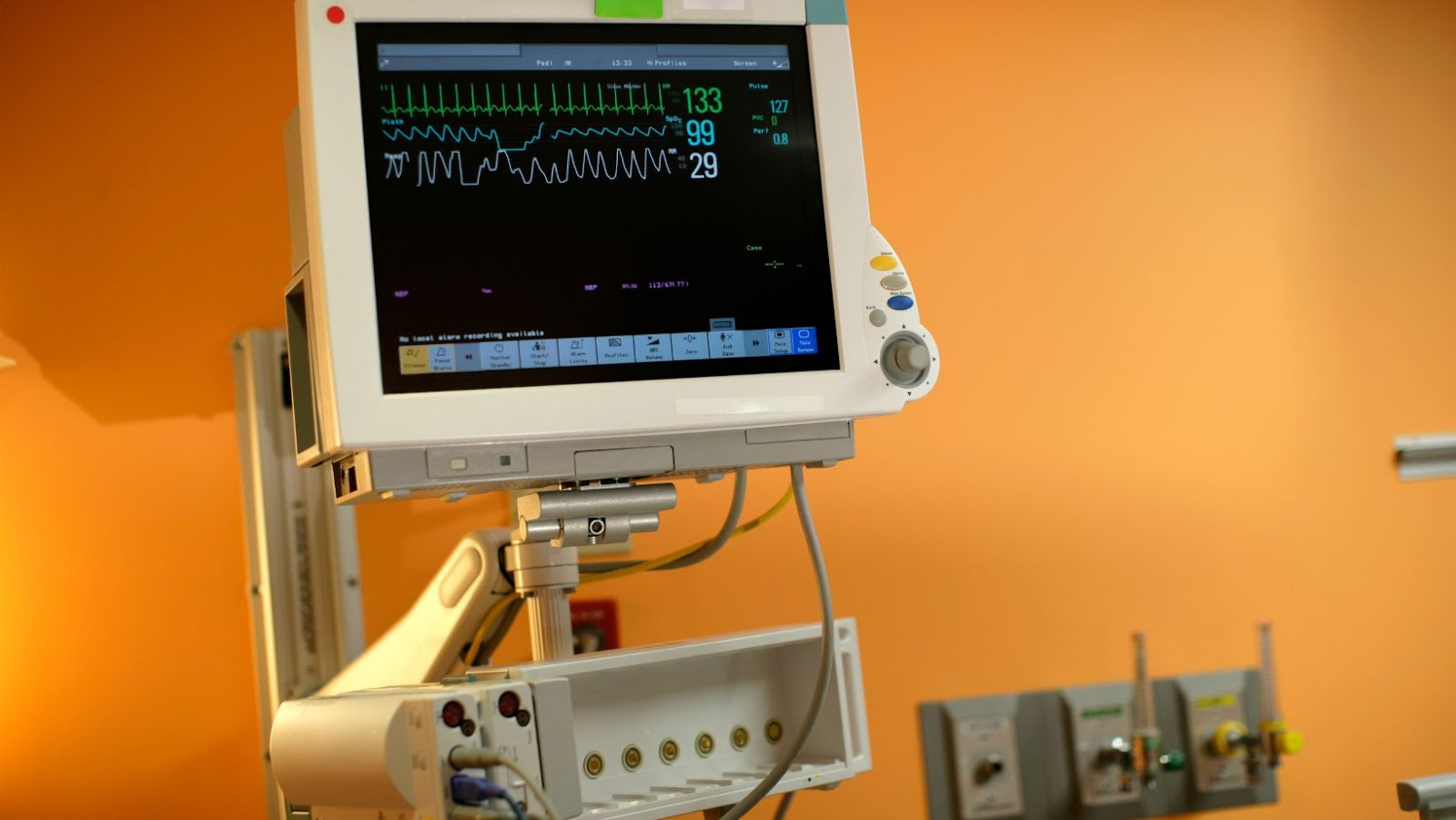
Nanox, a medical imaging company, has recently acquired Zebra Medical Vision, a startup focused on artificial intelligence (AI) for medical imaging interpretation. This acquisition promises to bring about a new era of radiology solutions, with faster and more reliable results for radiologists and doctors.
With this new technology, Nanox can potentially revolutionise radiological exams. This article will provide an overview of how Nanox will use Zebra Medical Vision’s advanced AI technology to improve patient outcomes globally.
In an up-to $200M Acquisition by Nanox, Zebra Medical Vision Brings Its AI to Reimagine Radiology Globally
In an up-to $200M acquisition by Nanox, Zebra Medical Vision has become a part of Nixon’s mission to reimagine radiology globally.
Zebra Medical Vision uses AI technology to diagnose medical images and help medical professionals diagnose diseases more accurately. This section will cover the basics of Zebra Medical Vision’s AI technology and how Nanox will use it.
History
Zebra Medical Vision, based in Tel Aviv, Israel was founded in 2014 to develop a medical imaging analytics platform to detect normal and abnormal medical conditions. Global healthcare providers currently use the technology to improve patient care’s accuracy, cost and speed. In 2019 it secured its first major source of income from Nanox Imaging Ltd., an Israeli venture-backed imaging startup backed by USB.
As part of the deal with Nanox, Zebra Medical Vision’s AI technology will be developed through an exclusive collaboration with Nanox over 10 years. This will allow Nanox to include imaging information capabilities such as automated detection and classification of diseases (using both their data and the use of Zebra’s) in their next generation medical systems powered by Nanox’s proprietary nano-scale x-ray beam technology. Additionally, the partnership includes a one-time up to $200M payment from Nanox for exclusive rights to use Zebra Medical Vision’s algorithms and AI services for patient diagnostic imaging worldwide.
The acquisition provides further evidence that AI and machine learning are poised to become valuable technologies for diagnostic purposes, making access to quality healthcare more affordable worldwide. With this investment in its total war chest, Zebra Medical Vision significantly impacted health care globally by enhancing existing radiological capabilities through machine learning driven diagnostic platforms. This acquisition is part of a trend towards improved efficiency and accuracy in healthcare delivery worldwide through smarter technologies by companies like Zebra Medical Vision that are revolutionising overall medical diagnostics globally.
AI Technology
Nanox has agreed to acquire Zebra Medical Vision (Zebra), an artificial intelligence (AI) imaging analytics company, for up to $200 million. With the acquisition of Zebra, Nanox will be able to leverage artificial intelligence technologies in developing and commercialising advanced imaging solutions.

Zebra’s AI technology is based on deep learning algorithms from massive medical image data sets, allowing clinicians to identify diagnostically meaningful insights quickly and easily. From visually identifying high priority cases such as pulmonary embolisms to scoring chances of heart attack or helping clinicians detect anomalies more accurately, Zebra’s technologies are already making a difference in hospitals across the globe.
To further support its mission to revolutionise radiology, Nanox has also invested in Zebra’s deeper-learning technology to detect diseases such as cancer early. This AI-powered platform aims to empower radiologists with Digital Twins that can help automate workflows which significantly accelerate diagnosis and follow ups, reduce healthcare costs, and ultimately save clinicians time while providing accurate results.
Overview of Nanox
Nanox is an innovative digital health company that’s revolutionising medical imaging. They recently acquired Zebra Medical Vision, a leading AI-driven medical imaging technology provider, in an up-to $200M deal.
This acquisition brings a unique opportunity to use Zebra Medical Vision’s AI to reimagine radiology globally. Let’s take a closer look at Nanox and what this acquisition means for the future of medical imaging.
History
Nanox is a tech company specialising in digitally-enabled medical imaging. Founded in 2011, Nanox has quickly become an industry leader in digital imaging, providing healthcare providers the most advanced, efficient, and cost-effective technologies. The company’s core goal is to revolutionise radiology by using data intelligence to improve diagnosis accuracy and reduce costs associated with medical imaging.
In 2017, Nanox partnered strategically with Zebra Medical Vision (ZMV) to accelerate its mission of making first-class radiology available worldwide. ZMV provides AI technology for medical imaging analytics and the software for Nanox’s imaging capabilities. This partnership allows hospitals to maximise the clinical value of their radiological data by utilising AI-powered analysis from ZMV that helps physicians recognize patterns they may have missed while incorporating deep actionable insights that help shape patient care decisions.
In October 2019, Nanox acquired ZMV in an up-to $200M transaction that solidified their partnership and allowed Nanox to reach out to over 150 radiology sites worldwide to provide sophisticated cloud infrastructure backed with AI analytics capabilities. This acquisition marks an important step towards developing Nanox’s digital platform as a unified global solution for providing medical imaging on demand—allowing reliable access to professional radiological expertise at a fraction of the cost currently associated with traditional medical imaging methods.
Acquisition of Zebra Medical Vision
In March 2020, Nanox announced an up-to $200M acquisition of Zebra Medical Vision. The Israeli tech startup develops proprietary AI that can detect anomalies in medical imaging and provide insights to facilitate earlier diagnosis. Once completed, each subsidiary will benefit from Nanox’s technology and collective resources, creating a single imaging platform with immediate access to its digital platform.
Combining Zebra Medical Vision’s AI technology with Nanox’s expertise in digital health, diagnostic devices and medical imaging, companies plan to build an integrated medical imaging platform for the global healthcare industry. This will help radiologists diagnose patients more accurately by fitting AI support into their workflow with easier access to MRI readings and suggestions for further patient investigations. The platform is also expected to be suitable for use on any scale: from local clinics through large radiology departments in hospitals or academic centres.

The combined technology could revolutionise diagnosis rates by giving radiologists deeper insights into symptoms presented on x-rays, CT scans or MRI scans without manual interpretation. With a greater capacity for automated image analysis, the hope is that this investment will allow radiology providers a much greater accuracy when it comes to patient care while also reducing costs associated with long waiting periods and physical examinations conducted by doctors and specialists worldwide.
Benefits of the Acquisition
The acquisition of Zebra Medical Vision by Nanox is transformative, with massive potential implications for the radiology industry. Nanox will leverage the advanced AI technology from Zebra Medical Vision to position itself as an industry leader in medical imaging.
In this article, we will discuss the advantages of this acquisition and the potential benefit to the medical industry.
Improved Radiology Diagnosis
The up-to $200M acquisition of Zebra Medical Vision by Nanox will help to improve radiology diagnosis and ultimately patient care.
By combining the AI-powered algorithms of Zebra Medical Vision with the revolutionary Nanox imaging technology, doctors could perform more precise radiology examinations. This could allow for earlier detection and treatment of conditions and improved accuracy in complex diagnoses.
The combination of Zebra Medical Vision’s powerful AI technology with Nanox’s state-of-the-art, low dosage imaging technology could result in earlier detection and intervention to treat diseases or anomalies that require radiological examination such as cancer and aneurysms, making it easier for doctors to accurately diagnose these conditions. Additionally, this combination would enable doctors to provide better patient outcomes while reducing medical expenses incurred due to unnecessary or inadequate procedures.
Cost Savings
The acquisition of Zebra Medical Vision’s AI technology is expected to bring cost saving benefits to Nanox. By automating certain aspects of the radiology process, such as automated triage, computer-aided diagnostic systems that can quickly generate reports of x-rays and scans, and more consistent disease detecting algorithms, AI in healthcare reduces human labour costs but also improves quality and accuracy in diagnosis.
In addition, Zebra Medical Vision’s deep learning technology helps with medical image analysis and understanding allowing clinicians to make better decisions. As a result, it is estimated that AI-driven healthcare solutions could save up to $150 billion in unnecessary health costs annually by 2021. With this acquisition, Nanox will join the ranks of other companies leveraging cutting edge AI technologies to streamline processes, reduce costs and improve patient care.
Improved Patient Care
The acquisition of Zebra Medical Vision’s AI technology by Nanox will help to dramatically improve patient care around the globe. For example, with the addition of Zebra Medical Vision’s innovative imaging and machine learning tools, Nanox will provide radiologists with powerful access to deep learning algorithms for better diagnosis, helping doctors detect critical anomalies and health risks in their patients faster and more accurately than ever before.
This technology will enable doctors to identify potential illnesses earlier, providing patients access to the best possible treatments and offering advice on preventative measures. Additionally, this technology could reduce healthcare costs since diagnosing problems earlier typically leads to faster and more cost effective treatments.
In summary, Nanox’s acquisition of Zebra Medical Vision’s AI technology is expected to lead to improved patient care globally and cost savings.
Challenges of the Acquisition
Nanox’s acquisition of Zebra Medical Vision recently created quite a stir in the medical industry. But it is also important to consider the challenges presented by the acquisition.
Nanox must support and integrate Zebra Medical Vision’s AI technology into their existing radiology platform. This will require significant investment of resources, including both capital and personnel. Moreover, there is the risk of being unable to fully realise the potential of the technology.
Let’s take a closer look at these challenges.
Regulatory and Legal Issues
The acquisition of Zebra Medical Vision by Nanox must comply with several domestic and international legal and regulatory requirements, especially when it involves the transfer of technologies related to Artificial Intelligence (AI). As AI technology is used widely across many industries in both business applications and consumer products, laws and regulations must be adhered to ensure the security and privacy of data, rather than an abuse of power for purposes such as monopoly or data-driven decision making.

In some regions like Europe, which has enacted the General Data Protection Regulation (GDPR) in 2018 to protect users’ data in all cases, our acquisition may face additional scrutiny if any activities involve personal health information.
On top of that, certain jurisdictions have enacted specific laws about AI or other technological developments. For instance, California state recently passed the California Consumer Privacy Act of 2018 that requires companies handling personal information if they operate on or do business with individuals in California have to comply with certain specific steps. Therefore, we need to pay attention to those relevant regional laws before closing any deal they can affect.
Moreover, Nanox will have to undertake due diligence before and during an acquisition to obey strict anti-trust regulations in its home country and overseas where it does business. As AI-enabled technology products are in demand across numerous industries worldwide, proper regulations ensure fair competition so that those countries’ markets do not become dominated by a few powerful players who hold most of the resources or take full advantage over other countries’ challengers.
Technical Challenges
The technical challenges associated with acquiring this size can range from ensuring all necessary documents and contracts are in place before the transaction to tackling complex compatibility issues between two large companies’ systems.
Nanox and Zebra Medical Vision must coordinate efforts to ensure a smooth transition, especially concerning exchanging information involved in the acquisition such as financial data, contracts, and legal documents. Additionally, IT teams must evaluate both companies’ roles in the deal and create plans for data access points and a strategy for integrating systems if needed. Once integrated, ensuring that all applications remain compatible is the acquisition’s technical challenge.
Security is also a major concern for most acquisitions of this size. Both organisations must assess potential risks their combined operations poses from external sources such as cyber attacks or data breaches. As part of evaluating security protocols they will need comprehensive analysis of existing measures against industry standards like HIPAA compliance regulations to properly identify any areas of vulnerability. Additionally, establishing secure procedures and compliant business processes which meet both organisation’s needs is an important technical challenge when dealing with an acquisition like this.
Data Security
Data security, an often overlooked challenge in acquiring Zebra Medical Vision by Nanox, is a paramount concern. Both companies need to be confident in the security protocols for data access and sharing to maximise the benefits of AI technology. This requires financial obligations for hardware and software upgrades, privacy training, and process establishment to ensure proper data use.
Nanox and Zebra Medical Vision should define all necessary data privacy terms before finalising any agreement or contract. Both companies also need to remain compliant with relevant state and federal regulations regarding how medical data is handled and protected from potential risks to protect both themselves from legal liability or government investigations.
Effective data security practices must be central to any Nanox and Zebra Medical Vision acquisition agreement.
tags = Nanox, Zebra, Brings Its AI to Reimagine Radiology Globally, nanox zebra medical vision 200mwiggersventurebeat, medical imaging space, AI software, and secured cloud capabilities, medical device platform, Israel












